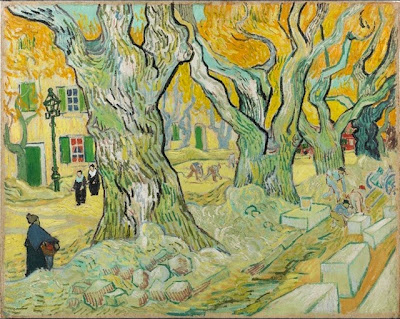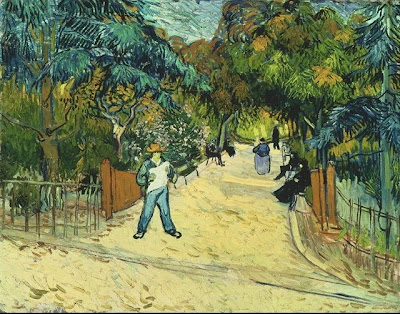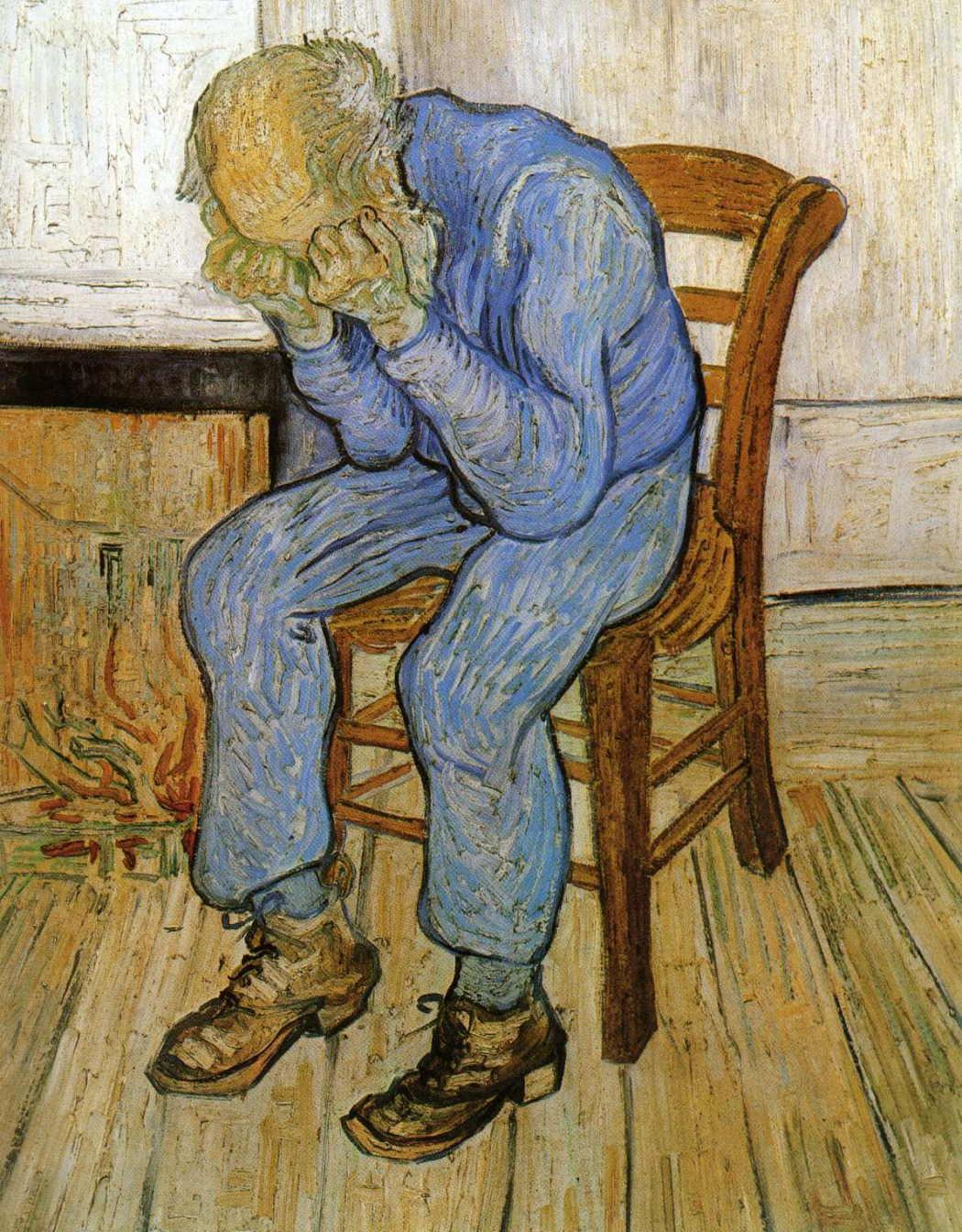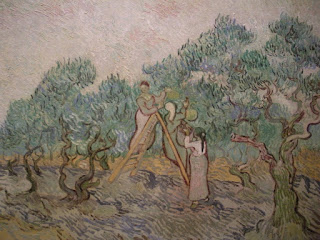Into the Fields With Van Gogh
| Vincent Van Gogh, Green Wheat Fields, Auvers, 1890 at the National Gallery of Art, a recent gift from the Collection of Mr & Mrs Paul Mellon |
Vincent Van Gogh’s Green Wheat Fields, Auvers came into Washington’s National Gallery of Art on December 20, 2013. It’s a windswept scene that sucks us in with intensity and urgency. Green Wheat Fields, Auvers is among the 70 or so paintings he did during the two months of 1890 when he lived in Auvers-sur-Oise. Experts believe he painted it in June, 1890, the month before he died.
Fortunately the new painting entered the museum at the same time Washington’s Phillips Collection is hosting an exhibition, Van Gogh Repetitions, until February 2, 2014. The exhibition of 14 paintings examines why the artist repeated compositions in the same format with different colors and very minor design changes. It features several portraits, The Bedroom at Arles and two magnificent Van Goghs owned by the Phillips Collection, The Road Menders, 1889, and The Entrance to the Public Gardens at Arles, 1888.
.jpg) |
| Vincent Van Gogh, The Road Menders, 1889, from the Phillips Collection, Washington |
Like the National Gallery’s new canvas, the paintings from the Phillips Collection are also landscapes with sweeping roads veering to the right side. They have predominantly yellow-green color harmonies, rushed perspective and ground levels that are tilted. Although people are included in these paintings, they’re small compared to nature. Trees and rocks are more powerful than the people and nature is a force to behold. Like many Japanese artists, it seems that Van Gogh felt the power of the natural world more powerful than an individual.
.jpg) |
| Vincent Van Gogh, The Entrance to the Public Gardens in Arles, 1888, Phillips Collection |
To gain an historical perspective, he painted The Entrance to the Public Gardens in Arles during the period he lived in Arles, and he did The Road Menders during his sojourn in the asylum of Saint- Paul de Mausole in St-Remy de Provence in 1889, the year after his notable breakdown. The National Gallery’s new painting comes from the next year, the last phase of his life, when he returned to northern France. Most of his landscapes from this time period totally lack figures, as it seems to him that the power of nature, as in Rain, Auvers, was taking over more and more in Van Gogh’s view.
Green Wheat Fields, Auvers, hung in a private residence from 1955 on, but now hangs with other Van Goghs: a very intense self-portrait, a vase of Roses, The Olive Orchard and Roulin’s Baby. Each of these paintings have variations of the magnificent Van Gogh greens or blues, including olive-greens, chartreuse, lime green, forest green, blue-greens and mint.
Green Wheat Fields, Auvers gives feelings of total immersion as the best Van Gogh paintings, including The Starry Night, do. It’s hard to imagine walking in this field without sinking or drowning in it. The road is very irregular and there is a roughness to this place. Texture is thick and visibly tactile even in the reproductions. The swirls of clouds feel like the swirls of fields. A swiftly rushing road on the right suggests the wind also flows from the same direction and brings field and clouds together. Colors of field and cloud are not the same, but they are in the same family of colors, analogous blues and greens.
Van Gogh was swept into this landscape, but a strong upright shaft of wheat in center seems to have brought him back to his center. It is here the viewers can be brought into focus, because the painting would not hold together as well without this strong vertical focus.
 |
||
| Van Gogh, Enclosed Field with the Rising Sun, 1889, painted in St-Remy Private Collection, photo taken from www.vggallery.com |
In the same way, the power of the sun brings the viewer into focus on Enclosed Field with the Rising Sun, a view he painted looking out of the asylum in Saint-Remy de Provence. He expanded the natural vista, using a very wide-angle perspective. Tilted landscapes, openings in the foreground, and exaggerated perspective are some of Van Gogh’s best tools for making us feel his perspective.
 |
| Jean-Francois Millet, The Sower, 1850 Museum of Fine Arts, Boston |
He painted wheat fields over and over, but some of the best renditions of man in nature come from his portrayals of The Sower, of which he did several versions, acknowledging the artistic legacy of Jean-Francois Millet. These are my favorite paintings by Van Gogh because they remind us of mankind’s dependence on nature and the interconnectedness of nature.
 |
| Vincent Van Gogh, The Sower with Rising Sun, 1888, Kröller-Müller Museum, Otterlo |
Van Gogh felt a oneness with the natural world, as if he saw the separate parts of the natural world as one unifying force. The best of his landscape paintings, are so powerful when they remind us, like Green Wheat Fields, Auvers or The Starry Night, of the interconnectedness of all things.
In the end, we, the viewers, are swept into his psyche and feel an empathy for him and his vision.













Recent Comments